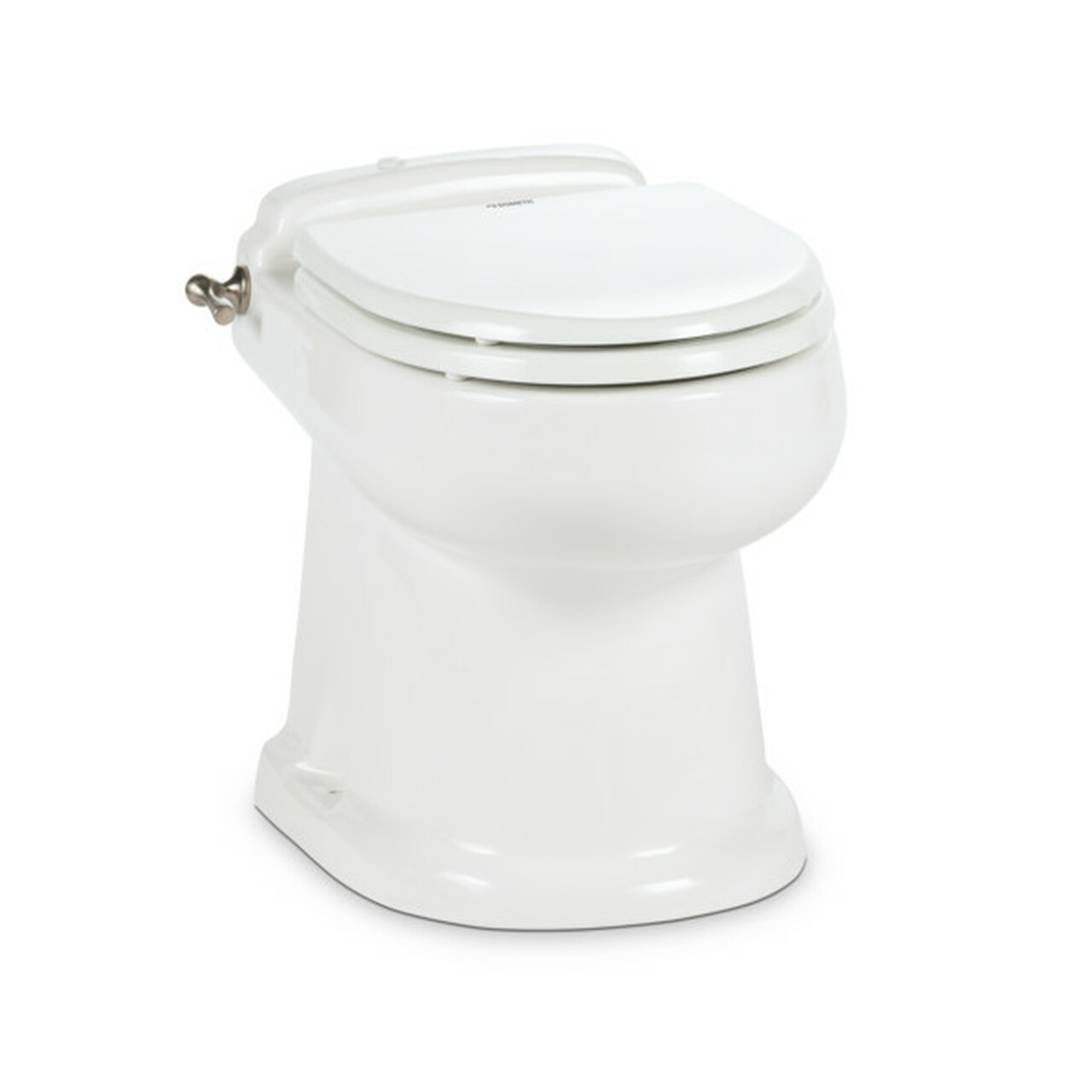How a Vacuflush Marine Toilet Works: Troubleshooting Tips
2nd Feb 2022
One of the biggest innovations in marine plumbing technology, VacuFlush marine toilets eliminate much of the inconvenience associated with traditional sanitation systems. Easy to maintain and operate, they’re also far more energy efficient in terms of water and electricity usage. Like any other marine toilet system, however, they do sometimes require a bit of maintenance. To better understand how approach VacuFlush toilet troubleshooting, it’s important to know how the system itself functions.
How Does a VacuFlush Marine Toilet Work?
VacuFlush boat toilets come in many different styles, but they all operate on the same basic principles. Each sanitation unit consists of three components: the vacuum toilet, the vacuum pump generator, and the waste holding tank.
Unlike a conventional toilet system that uses water pressure and gravity to move waste through the lines, a VacuFlush marine toilet maintains a vacuum throughout the system at all times. Water can be added to the bowl simply by lifting the flush lever.
VacuFlush boat toilets are extremely efficient, using only about a pint of water per flush and between 3-7 amps of electricity. Since they use so little water, a typical VacuFlush toilet has about four times the holding tank capacity of other systems.
When the toilet is flushed by pushing the lever down for three seconds, the stored vacuum energy is released and instantly evacuates any water and waste currently in the bowl. The cleared waste is then sucked through the lines at a speed of approximately seven feet per second, moving through the vacuum pump until it reaches the holding tank.
By the time the flush lever is released and snaps back into place, an integral pressure switch within the vacuum tank detects a change in pressure and activates the pump to recharge the vacuum within the system. The pump typically takes about one minute to recharge the vacuum level, but it may take a bit more time for longer runs.
VacuFlush Toilet Troubleshooting
While VacuFlush marine toilets are efficient, convenient, and reliable, they do occasionally require maintenance or repair. Fortunately, VacuFlush toilet parts are readily available, which makes troubleshooting a bit easier to manage. Most problems come down to one of two general issues: the loss of vacuum or a flushing mechanism failure.
Loss of Vacuum
If the vacuum pump frequently turns on without anyone flushing the VacuFlush toilet, this is a sign that vacuum is being lost somewhere in the system. The pump generator’s vacuum switch detects the loss of vacuum and then turns the pump on to restore the system to the correct level. Over time, this can put unnecessary strain on the vacuum pump.
Vacuum loss can typically be traced back to three problems:
- Worn Out Duckbills: Duckbill valves hold the vacuum seal within the generator pump. When they wear out, air is able penetrate the seal. Depending on how heavily the system is used, duckbill valves typically last between 3-5 years.
- Worn Out Bowl Seal: Much like a conventional toilet, a VacuFlush marine toilet uses a bowl seal to prevent water from leaking out of the tank. When these seals wear out, the vacuum will pull water and air from the bowl and through the system, which will gradually cause the vacuum level to deteriorate and cause the pump to activate. Bowl seals have a 3-5 year lifespan under most conditions.
- Cracked Bellows: Located in the vacuum pump, the bellows creates the pumping action that pulls water and air through the system. When it wears out or is damaged, flushed wastewater will spew out of the pump, creating a foul-smelling (but easily diagnosed) mess. A cracked bellows also allows air to enter the system, causing the vacuum to continually deteriorate. When replacing the bellows, it’s advised to refer to the appropriate VacuFlush toilet parts diagram to make sure the correct O-rings are replaced as well. A typical bellows can last anywhere from 5-30 years.
Flushing Mechanism Failure
Like any other toilet, a VacuFlush boat toilet has several components that can wear down from repeated use and may not last as long as the bowl itself. When the toilet doesn’t flush properly, there are usually two reasons for the failure:
- Broken Ball, Shaft, or Spring Cartridge: When someone steps on the VacuFlush toilet pedal, the flush assembly rotates the ball into an open position to evacuate the waste. If the spring cartridge has worn out or the shaft is dislodged, the assembly will not be able to rotate the ball back into position to reestablish the seal. Replacing the assembly will usually resolve the issue.
- Frozen Water Valve: If no steps were taken to winterize the VacuFlush marine toilet system, the water valve can easily freeze and crack. This will cause water to leak from the pedal, which can create additional problems if it’s cold enough to freeze. The frozen valve will need to be replaced.
Get the VacuFlush Toilet Parts You Need for a Speedy Repair
Once you’ve determined the source of the problem, you should be able to refer to your model’s VacuFlush toilet parts diagram to identify the correct replacement parts. Environmental Marine is your one-stop source for VacuFlush toilet repair. As one of the largest suppliers of marine plumbing supplies and marine toilets in the United States, we’ve been helping boat owners find the parts they need for over 25 years.
If you need assistance locating the correct parts for your VacuFlush marine toilet, talk to one of our experienced team members today to quickly identify the best solution that will get you back out on the water.

